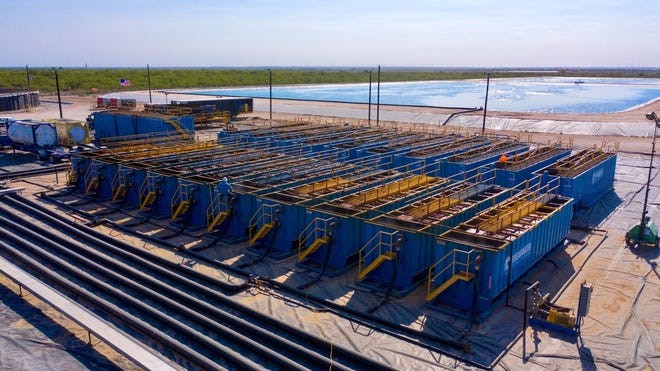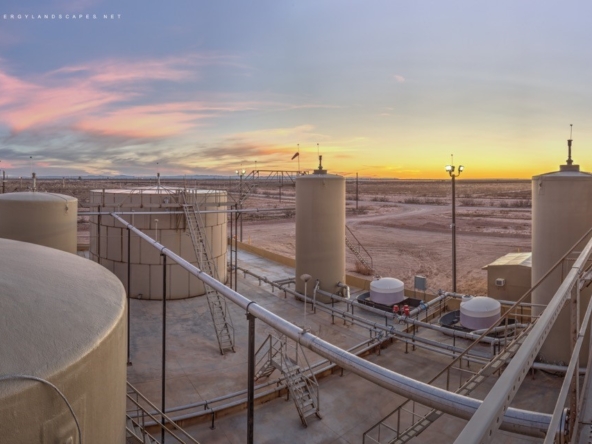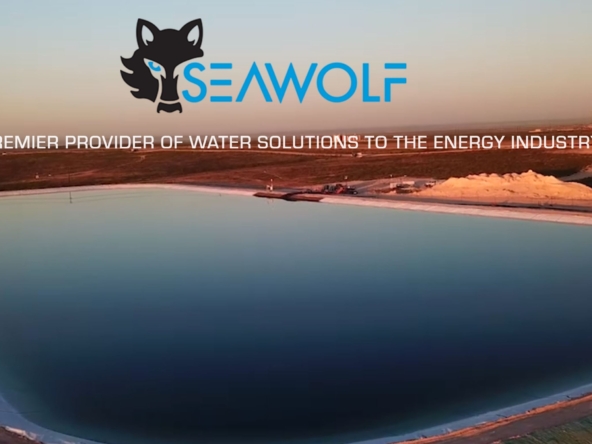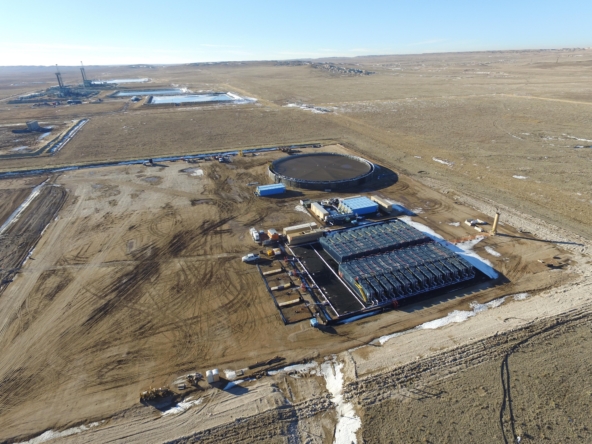Oil and gas wastewater operations in the Permian Basin continued to grow alongside and upswing in production as the nation and world recovered from COVID-19.
The health crisis brought on an historical collapse in demand for fossil fuels, meaning production of crude oil and natural declined.
But as the market recovered, so did production and the installation and expansion of produced water facilities throughout the Permian – the most active oilfield in the U.S. that spans southeast New Mexico and West Texas.
On Wednesday, the price per barrel of domestic oil was at about $73 per barrel, and Baker Hughes reported the Permian Basin added one rig in the last week for a total of 237 compared with 132 a year ago. Texas grew by two rigs in the last week for a total of 221 compared with 111 last year, and New Mexico held steady at 75 rigs, an increase of 24 in the last year.
That increase in production would likely mean operators would need more water to drill wells.
Produced water is generated when water is brought up from underground shale along with oil and gas, at a rate of up to 10 barrels of water per barrel of oil.
Environmental groups viewed this byproduct, which became increasingly plentiful during the recent shale boom, as a dangerous waste, while many in the industry saw it as an opportunity to move away from the use of freshwater and the depletion of aquifers for energy production.Houston-based Breakwater Midstream continued to capitalize on this trend of growing need by expanding its Big Spring Recycling System in Martin County, Texas just north of Midland on the eastern side of the Permian.
The facility would service operators throughout the basin as they opt to recycle and reuse produced water, as opposed to disposing of it through injection wells that pump the water back into the formations it came from.
The expansion added 13 miles of pipeline to the facility and increase its distribution capacity to 360,000 barrels of water per day.
Breakwater’s system was also intended to provide a central location for operators to store produced water with a permitted treated water storage capacity of about 1.5 million barrels.
As of June 21, the company reported the facility treated 18 million barrels of produced water in its first 16 months of operation.
The company also operates nine other produced water facilities in the region, and announced plans to add two more.
Oil and gas water treatment to address Permian Basin earthquake concerns
Breakwater Chief Executive Officer Jason Jennaro said saltwater injection lead to more seismic activity in the region, increasingly close to major cities like Midland.
Since 2017 when the region’s oil production began booming due to expanded use of fracking, more than 14,000 seismic events, potentially earthquakes, were recorded in the Texas side of the Permian, the company reported, including 2,000 with a magnitude of 2.0 or greater – known as “micro earthquakes” and often not felt but indicative of seismic shifts in the area that could lead to larger events.
Almost every West Texas county saw events, records show, with Reeves and Culberson counties along the New Mexico border leading the region with 5,199 and 4,259 seismic events, respectively in the last four years. “With more of these seismic events shifting to the population centers near Midland, an alternative to wastewater disposal is becoming even more important,” Jennaro said. “The recent wave of seismic activity in Martin County has increased operator demand for recycling.
“Wastewater recycling provides operators with an environmentally sustainable alternative to sending all their produced water downhole into disposals located within known seismic clusters.”
A June 10 study from energy research firm Rystad Energy said tremors above a 2.0 magnitude “quadrupled” in key oil-producing regions in 2020 and were likely to continue to grow, based on data from Texas, New Mexico, Oklahoma and Louisiana.
The numbers steadily grew each year since 2017, per the study, starting at 242 in 2017 and recording 938 in 2020.
In the first five months of 2021, Rystad reported 570 tremors which meant the regions were on pace to exceed the previous year while events become more frequent and more dangerous.
So far this year, the study showed there were 11 events at a magnitude of 3.5 or greater, which can be felt but are usually not destructive, compared with six in 2018 and 2019 each, and 14 in 2020.
The study linked the rising seismicity in oil and gas regions to saltwater disposal, which saw increased volumes in previous years as production grew.
Between 2014 and 2017, U.S. onshore production saw about 10 billion barrels of produced water disposed, growing to 11.5 billion barrels in 2018 alone and 12.4 barrels in 2019.
2020 saw a slight dip to 11.3 billion barrels as COVID-19 led to less oil and gas production and less water produced.
Ryan Hassler, shale analyst at Rystad said increasing water recycling operations in the oilfield could help address the growing concerns for seismicity alongside fossil fuel production.
“To maintain water disposal at 2020 levels and offset its coming growth, the amount of water that is treated and recycled must instead grow going forward and the cost of doing that could accumulate to above $1 billion annually for oil and gas producers,” he said. “The costs can vary per region, but the Permian Basin has very competitive economics compared to other areas.”
Hassler said recycling would address water scarcity in the desert Permian Basin region in both West Texas and southeast New Mexico, areas struggling under increasingly perilous drought conditions which could be exacerbated by growing water usage in the oil and gas industry.
He said by the end of 2022, the Permian Basin – including New Mexico’s Delaware and Texas’ Midland sub-basins, could see 40 to 43 percent of fracking water come from recycling.
“Fresh water sourcing in arid regions of West Texas and New Mexico threaten the water supply of local communities and essential agriculture activities, while environmental concerns surrounding the chemical composition of produced water serve only to fan the flames of public antipathy,” he said.



